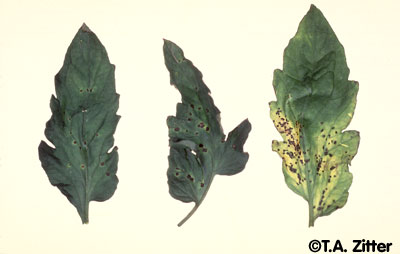The return to traditional seasonality however reminds me of growing problems we have almost forgotten. This week I'm particularly thinking of Black Spots on Tomatoes. With the dry and relatively warm, early seasons we have experienced over an extended period we have rarely seen any sign of Black Spots with yellow margins on Tomato leaves for the best part of 10 years. They have made a return this year.

I think we have managed the crops well but the weather conditions have made it more prevalent so we have dumped a few batches of stock, particularly Tiny Tim. In other years Roma has been a concern. Some retail customers have reported outbreaks. I am happy to share responsibility for the first outbreak with a garden centre customer but after that our response is buyer beware. This is a disease that is too common for us to accept every casualty.
So how is it best controlled? When I first started growing Tomatoes all we knew was to spray with Copper. Kocide, Copper Oxichloride, Copper Curit, Bordeaux mix. These are all preventative fungicides that coat the foliage of the plant to keep the Bacteria out. The effectiveness was was limited at best. In the nursery, cultural controls are most effective. Hy gene is critical, dump any plants showing signs of disease and treat the growing area with chlorine solution. Sporekill is a product we use regularly but dilute house hold disinfectant will do perfectly well. We have found that using Sporekill at very dilute rates we can mix with a Copper fungicide to cleanup an outbreak if we get in early (often hard to do because this disease will spread very rapidly). Growing on benches is also ideal as it limits the ability of the disease to splash about in irrigation water.
The other tip I picked up from Peter Wood (Woodlyn Nursery) be careful with fertilizer. If we use a blended fertilizer with a high Nitrogen ratio the plant cells become very soft and susceptible to disease infestation. Using a balanced Nitrogen (N):Potassium (K) ratio, even a higher Potassium to Nitrogen ratio is good. This toughens up the cell walls and keeps the bacteria out. We use a blended liquid fertilizer: Campbell's Diamond White, it works remarkably well.
Anyway, hopefully from now on the weather will warm up and the problem becomes less acute. Ha Ha, I've just read the weather forecast! Keep warm, good luck at the Cup.
No comments:
Post a Comment